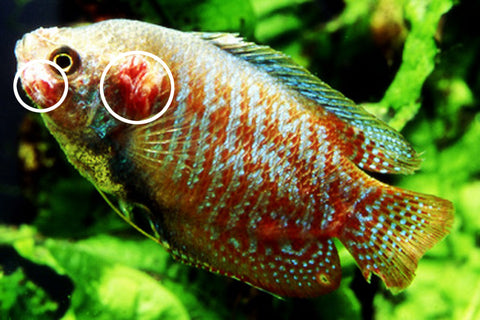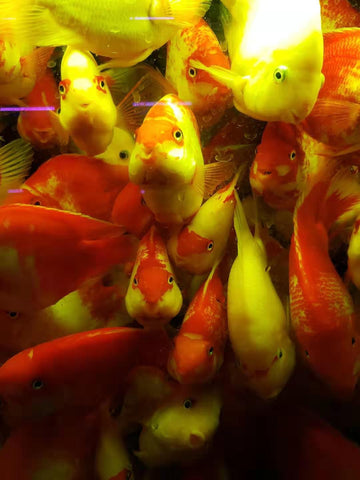A mother and her son came in today to get an aquarium for his 10th birthday. They have been coming in once or twice a week for the past month, loaning books from our aquarium library in preparation. The anticipation of the little boy was high, whereas the mother was a little hesitant. She was concerned about her son’s health while keeping an aquarium, and raised a very important question, can fish diseases be passed on to humans?
The answer is yes, some diseases are what as known as zoonotic which means they can be passed from animal to human. However, in most cases the diseases passed on from aquarium fish to humans are bacterial. Humans do not display the same symptoms as the infected fish, for example putting your hand into an aquarium with fish infected with fungus, you are not going to wake up in the morning with it under your arms.
The most common aquarium zoonotic disease is fish tuberculosis also known as the wasting away disease. Infection in humans develops when aquarium water-carrying bacteria from the genus Mycobacterium enters the body through broken skin, like a small cut. The skin infection does not pass on from person to person and is commonly referred to as aquarium or fish tank granuloma.
Fish tuberculosis in the host is caused by one of many bacteria from the genus Mycobacterium. They can be afflicted by, or at the very least be passive carriers for, M. chelonae, M. kansasii , M. celatum, M. dienhoferi, M. abscessus, M. flavascens, M. fortuitum, M. gordonae, M. intracellulare, to name a few, including the one that truly concerns us, M. marinum which is well documented for being zoonotic.

A mild case of fish tank granuloma caused by Mycobacterium marinum.
At the trauma site, fish tank granuloma appears as a slow-growing, inflammatory red lump (nodule or plaque). The lesion is frequently uncomfortable and may develop into an ulcer or crust. Skin changes often emerge two to four weeks following aquatic exposure. However, it can be treated with a simple course of antibiotics.
Fish tuberculosis is easy to spot in the aquarium and to date, sadly there is no known cure for it, and if one fish in the aquarium has it, the likelihood the rest are infected is very high.
Early symptoms include emaciation in the aquarium fish, particularly in the top half of the body. Another characteristic symptom is abdominal distension, which is accompanied by spinal abnormalities, and the most notable, open lesions and blisters on the skin.

A dwarf gourami displaying blister like lesions on its body, a clear sign of fish tuberculosis, and with all cases of fish suffering from TB it is best to euthanise them.
There are no species of aquarium fish that can escape fish tuberculosis and some species are more susceptible than others, barbs, carp and livebearers are notorious for it.

An overstocked aquarium creates the ideal conditions for Mycobacterium marinum.
As I mentioned previously when fish tuberculosis is in your aquarium there is very little you can do. You can help prevent it by keeping up with water changes, buying fish from reputable sellers who quarantine and not overstocking your aquarium. Many Mycobacterium thrives in poor water quality, so, regular maintenance is just as important for your aquarium inhabitants' health as well as your own.
So, should it be something of concern when keeping fish? Of course, we always need to take care of our health. Simple prevention is always wearing aquatic safe gloves when doing aquarium maintenance, even if the aquarium appears healthy. Also, some alcohol rub on your hands after maintenance is just good practice if you do not use gloves when cleaning your aquarium.
Overall, the risk of catching fish tank granuloma is very rare, even if you took a mouthful of the water while doing a water change (we have all been there). So, do not panic if you have come in contact with suspected fish tuberculosis but be prepared to lose all your fish, and be sure to sterilize all equipment and the aquarium before starting over again.
If anyone is wondering, after explaining this to the mother who asked the question, she was still happy to let her son get his first aquarium, along with multiple boxes of aquatic gloves.




